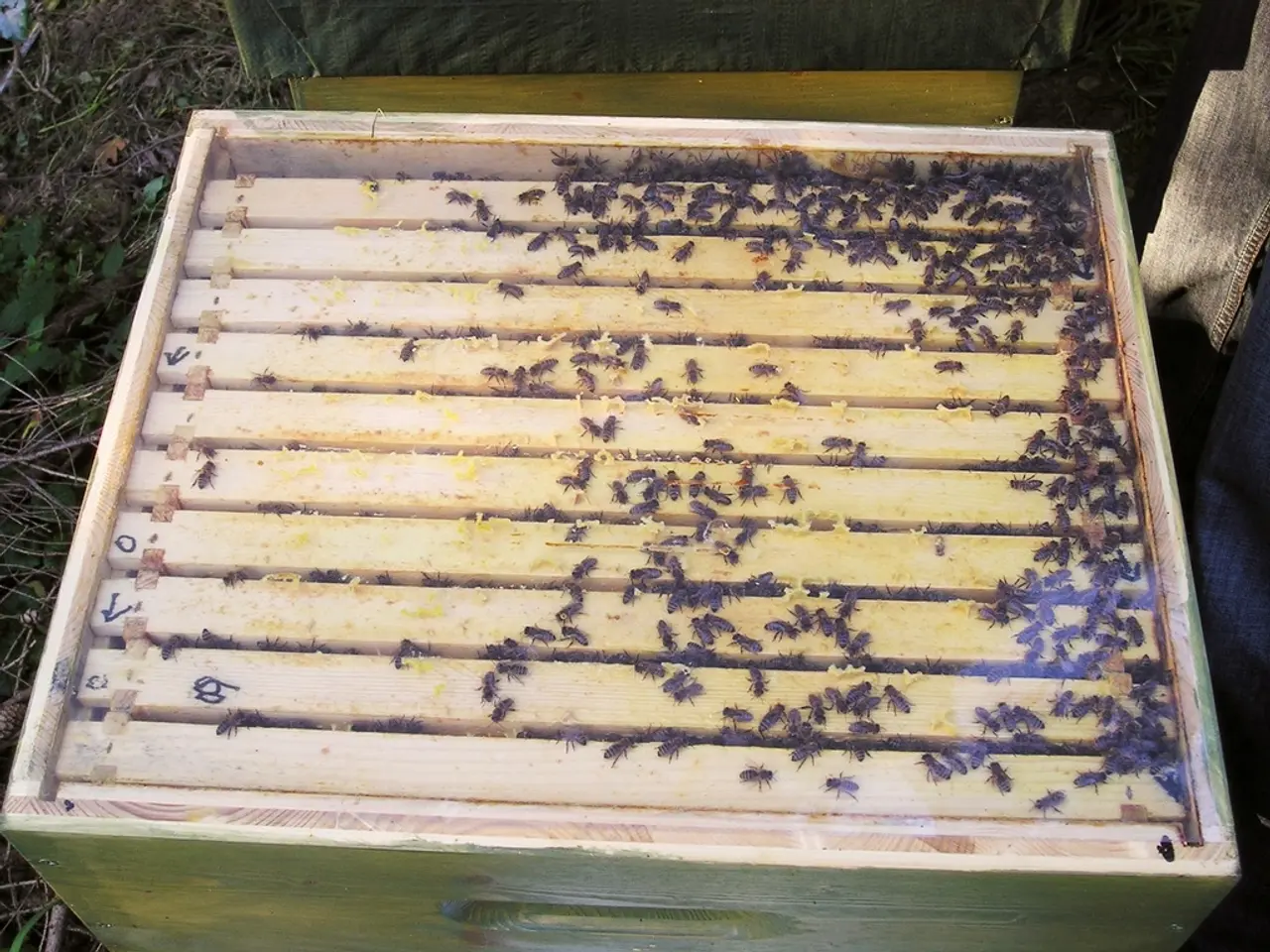Strategies for Eliminating Ticks in Your Outdoor Space
Chill Out, Tick-Free Garden Ahead: Here's Your Guide on Tick-Slaying Techniques
Tick-tack-toe no more! With our friendly guide, we'll show you how to recognize, repel, and actively protect your garden from these bloodsucking disease transmitters.
Why Ticks are a Garden Party Crasher
Thanks to global warming, ticks are a year-round problem. A tick bite can lead to Lyme disease or even tick-borne encephalitis (TBE). Let's dive into the interior design of a tick-free garden.
Where do ticks like to lurk?
Ticks adore moist and shady hideouts in the garden, often nesting in bushes or grass. If your garden mingles with forests or parks, you’ve got yourself an especially appealing tick resort.
Do ticks drop from trees like sticks?
Fear not the leafy parasitic invasion. Ticks avoid high-altitude real estate and instead stick close to the ground, so they won't fall on you unless you wander too close to the ultimate tick shack - lush, overgrown bushes or moist, shady areas.
How to Spot a Tick
Tick-tock! Ticks belong to the spider family and can vary in color, from brown and reddish-brown to black, gray, or yellow. The common wood tick is the most widespread species in Germany. To tell apart the males from their ladies, look for a dark scutum (shield) on the male's back. Females, however, are reddish-brown with a less prominent scutum, and they can grow up to six millimeters in size. Once engorged with blood, they can expand to one centimeter, changing their appearance to a grayish hue. Most tick-inflicted wounds are caused by nymphs, which are most active from March to July.
Garden Tips to Fend off Ticks
To keep the tick population from booming in your garden, employ these tips:
- Regularly mow the lawn to remove the ticks' preferred lounging spots.
- Keep plants under control by pruning overgrown vegetation regularly.
- Maintain the garden tidily by frequently clearing leaves and debris to limit tick habitats.
- Implement a tick management strategy using natural or chemical methods.
Natural Weapons in the War on Ticks
Use these plants or essential oils to give ticks the heebie-jeebies:
- Ticks abhor the scent of lemon, orange, or lime. Boil half a liter of water and add citrus fruits for a natural repellent. After cooking for about an hour, strain the liquid and distribute it in the garden using a spray bottle. Target areas with high tick density.
- Lavender, lemongrass, catnip, rosemary, and tansy are tick-hating superheroes. Plant them in your garden to create a tick-free zone. Note: Tansy is toxic to humans and pets, so tread carefully if you have delicate family members or furry friends.
- Mix citrus oil, tea tree oil, or eucalyptus oil with water in a spray bottle and spritz problem zones.
- Invite ants, spiders, and ladybugs to your garden. They chow down on ticks and their larvae, reducing your need for harsh pesticides.
Tick Traps and Chemical Solutions
Consider these options for tick-taming tools in your garden armor:
- Tick traps can be strategically placed in your green space.
- Bait stations positioned at the garden borders can help control ticks for approximately four weeks.
- Check with your local garden store or online vendors for environmentally friendly chemical tick sprays.
Remember: Ticks start their party at temperatures as low as seven degrees Celsius, so begin your tick management strategies early, and keep taps on tick traps during all seasons.
Finding Nests and Removing Them
In the hunt for tick nests in your garden, search for areas that align with ticks’ preferences, such as firewood piles, stone stacks, bases of walls, compost heaps, and flower pots. The egg-laying is a telltale sign of a tick nest; these eggs are tiny, black or brown, and smaller than the tip of a matchstick. Tick removal involves regular maintenance of your garden and the periodic use of tick traps.
Stay vigilant, show those ticks who's boss, and enjoy a healthier, tick-free garden!
Enrichment Data:
Bonus Tick-Fighting Tips
To effectively control ticks using natural methods, integrate multiple strategies such as plant choices, essential oil usage, habitat management, and encouraging beneficial insects.
Essential Oil Combinations for a Powerful Punch Against Ticks
- Lemon Eucalyptus Oil: Derived from the leaves of the lemon eucalyptus tree, this oil has been found to deter ticks for up to nine hours[1].
- Peppermint Oil: This oil also protects against ticks for up to several hours[1].
Tick-Protecting Plants
Introduce these tick-repelling plants to your outdoor sanctuary:
- Wormwood: Wormwood emits a strong scent that repels ticks[2].
- Cedar: Cedar oil has been found to be effective against ticks[2].
- Pumpkin: Pumpkin transplants have been shown to reduce tick populations[2].
Sources:
[1] Center for Disease Control and Prevention, "Personal Protective Measures," [https://www.cdc.gov/lyme/prevention/ecology.html#personal-protective-measures][2] University of Rhode Island TickEncounter Resource Center, "Plant-Ticks interactions: Resistance and Repellency," [https://www.tickencounter.org/prevention-resources/biological-repellents/plant-tick-interactions-resistance-and-repellency]
- Incorporate 'nutrition' into your tick-fighting arsenal by consuming foods high in garlic, which is known to deter ticks when added to your gardening soil or table scraps for critter feed.
- For a 'home-and-garden' solution, use diatomaceous earth, a naturally occurring silica-based powder, to dust problem areas around your home's foundation, garden beds, and outdoor furniture to kill ticks and their eggs.
- Extend your tick-free lifestyle beyond the garden by paying attention to 'skin-care' and performing daily tick checks on yourself, family, and pets after spending time outdoors, especially in wooded areas.
- To make a 'home-improvement' investment for your peace of mind, consider installing a tick-tube made from cardboard or nylon tubing filled with cotton soaked in permethrin, a chemical repellent, along the perimeter of your property. This tick barrier can help control tick infestations.
- 'Health-and-wellness' guidelines advise that regular vacuuming, laundry routines, and pets' grooming can reduce tick numbers indoors, preventing them from seeking refuge and potentially spreading disease.







